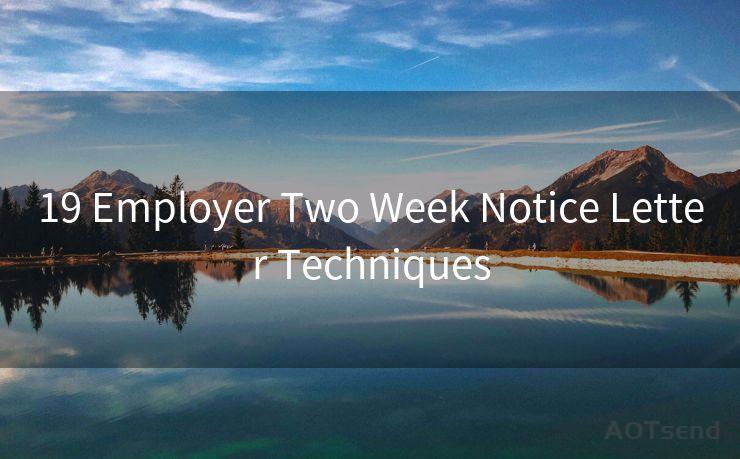19 Employer Two Week Notice Letter Techniques




When it comes to resigning from a job, professionalism and courtesy are key. Giving your employer a two-week notice letter is not only a common courtesy but also a crucial step in maintaining a positive relationship with your soon-to-be former employer. Here are 19 techniques to help you craft an effective two-week notice letter.
1. Clear and Concise Introduction
Begin your letter with a clear and concise introduction stating your intention to resign and your last day of work. This sets the tone for the rest of the letter and ensures there's no confusion about your intentions.
2. Express Gratefulness
Thank your employer for the opportunities and experiences you've had during your employment. This shows appreciation and respect, vital for maintaining a positive relationship.
3. State Your Reason for Leaving
While it's not mandatory, stating your reason for leaving can provide closure and understanding. Keep it brief and professional, avoiding any negative sentiments.
4. Offer to Assist in the Transition
Offering to help with the transition, such as training your replacement or finishing up projects, demonstrates your commitment to the company and ensures a smooth handover.
5. Maintain a Positive Tone
Keep the letter positive and constructive, avoiding any criticism or negativity. This helps to preserve your professional reputation and keeps the door open for future opportunities.
6. Provide Contact Information
Include your contact information in case your employer needs to reach you after you've left. This shows you're willing to assist even after your departure.
7. Proofread and Edit
Ensure your letter is polished and professional by proofreading and editing it carefully. Grammar and spelling errors can leave a negative impression.
8. Use a Formal Letter Format
Stick to a formal letter format, including a proper heading, salutation, body, and closing. This maintains a professional appearance.
9. Keep It Short and Sweet
Avoid lengthy explanations or unnecessary details. A concise letter is more likely to be read and appreciated.
10. Avoid Emotional Language
Stick to factual and objective language, avoiding emotional or hyperbolic statements.
11. Address the Letter to the Correct Person
Make sure you address the letter to your immediate superior or the appropriate HR representative.
12. Use a Respectful and Polite Tone

Maintain a respectful and polite tone throughout the letter, even if you're leaving due to dissatisfaction.
13. Include a Clear Resignation Date
Specify the exact date of your resignation to avoid any confusion.
🔔🔔🔔
【AOTsend Email API】:AOTsend is a Managed Email Service for sending transactional emails. Support Email Types: reminders, authentication, confirmations, notifications, verification codes, invoices, password resets, account activations, billing statements, two-factor authentication (2FA), and one-time passwords (OTP) emails, etc. $0.28 per 1000 Emails. 99% Delivery, 98% Inbox Rate.
You might be interested in:
Why did we start the AOTsend project, Brand Story?
What is a Managed Email API, How it Works?
Best 25+ Email Marketing Platforms (Authority,Keywords&Traffic Comparison)
Best 24+ Email Marketing Service (Price, Pros&Cons Comparison)
Email APIs vs SMTP: How they Works, Any Difference?
14. Offer to Help with Knowledge Transfer
If possible, offer to assist in transferring your knowledge and responsibilities to your successor.
15. Express Willingness to Cooperate
Indicate your willingness to cooperate with any audits or investigations that may arise after your departure.
16. Close on a Positive Note
End your letter on a positive note, thanking your employer again and expressing best wishes for the company's future.
17. Use a Professional Font and Formatting
Ensure your letter looks professional by using a clean, legible font and proper formatting.
18. Send a Hard Copy and an Electronic Version
Consider sending both a printed and an electronic version of your letter to ensure it's received and accessible.
19. Follow Up in Person or Via Email
After submitting your letter, follow up with a personal meeting or email to confirm receipt and discuss any transition details.
By following these techniques, you can ensure your two-week notice letter is professional, courteous, and effective, paving the way for a smooth transition and maintaining positive relationships with your former colleagues and employers.




Scan the QR code to access on your mobile device.
Copyright notice: This article is published by AotSend. Reproduction requires attribution.
Article Link:https://www.mailwot.com/p2846.html



